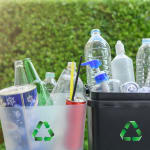
Our planet cannot take any more packaging and plastic waste growing inside our homes. We need to think out-of-the-box, and reconsider how we package and sell products,” says Tatiana Ryfer, Head of Branding & Visual Identity, Carrefour.
Ryfer is a speaker at the marcus evans EuroPack Summit 2022.
What are the current challenges in the packaging industry?
The environmental issue is not optional anymore. The main challenge today is not just packaging itself but being part of a global solution. Large retailers have the opportunity to make a difference. We need to think holistically about the entire customer journey, all the different touch-points, and come up with the best packaging solution. How does the store sell the product? How is it served? What product information does the customer need? Do people put it into another container when they go home? Do they discard the package? How? All of these must be considered early on when designing the product and its packaging. The package should not be treated separately.
It is not just about new materials but shifting existing materials, replacing plastic with paper or cardboard solutions, keeping up with new technologies and ways of packaging. There are materials almost as transparent as plastic that can offer a glimpse inside the package. There is edible packaging, and there is simply no packaging at all! The challenge is to come up with new solutions that have as a starting point a consumer need or expectation and to make them economically viable.
How do you see the future of sustainable packaging?
We have realised that in some departments of our stores we still have a lot of plastic. The reality is that today plastic provides the most transparency as a material. That is why we need to think things differently, to make sure we satisfy customers who are used to completely transparent packaging. In some areas of the store, we can give them the opportunity to view the product in other ways, or get it packaged in front of them. There is a trust issue when you take out transparency, so we need to come up with new buying experiences that allow our customers to have all the information and visual access they need.
How can brands speak to their audience?
The loyalty issue is more subtle than before. Today, customers are willing to change brands based on what they do and stand for. The era where brands just had to come up with a story and customers would believe it is over. Creating good looking products, packaging and stores are not enough if they do not respond to a real need, and if the message throughout all the customer’s touchpoints is not consistent.
We are also facing a paradigm change in the retail world, where price is not the main buying criteria anymore; customers are willing to choose brands that nourish a healthy relationship with its users by providing a qualitative global experience.
How did you create a design culture at your company?
It was a long process that took many years of hard work. One of the major roles of an integrated design team in big scale companies is to coach, spread and stimulate design thinking methods so that they become automatisms. Not only starting from the user, but checking concepts throughout all the creative steps. Being able to rapidly test ideas is also key to mid-project checks and adjustments. The “test and learn” methodology helps considerably reduce failure risks. When we are dealing with large-scale production and sales, each single action counts!
What impact is e-commerce having on packaging?
We are used to buying products packaged in a very specific way, designed for physical stores, but when you look at the product online, sometimes the packaging does not fulfil our need to see the product or provide the information we need. With the acceleration of e-commerce, new questions are coming up. What do we do with packaging when people cannot hold or smell the product like they want to? This is a big need we need to address. Should we sell the product first or the packaging first? Buying through a screen is a different experience.


